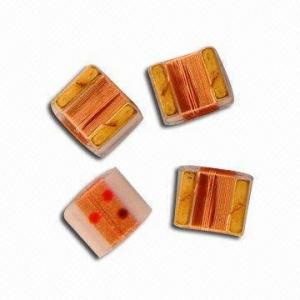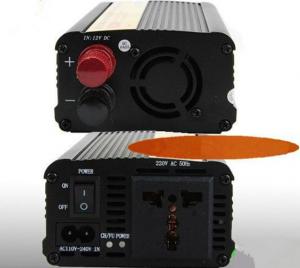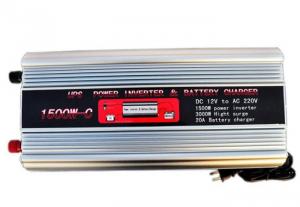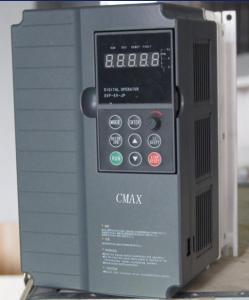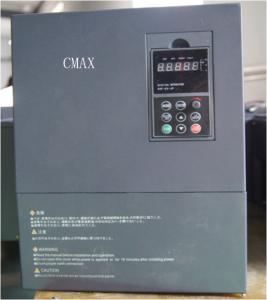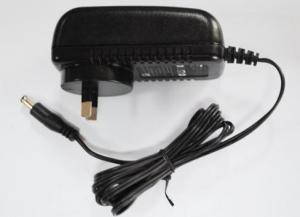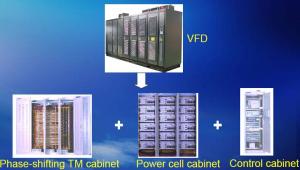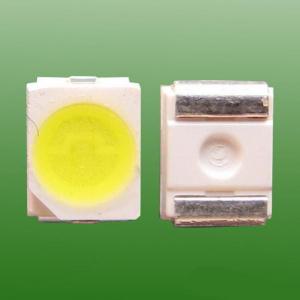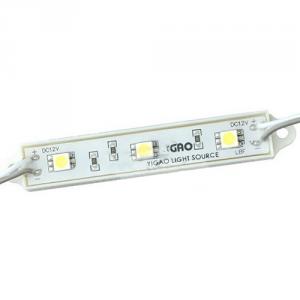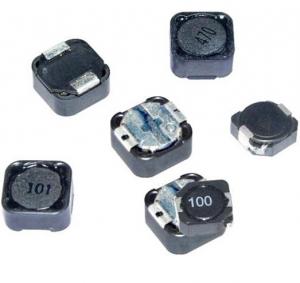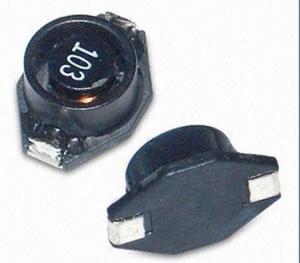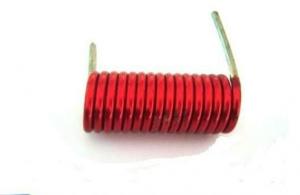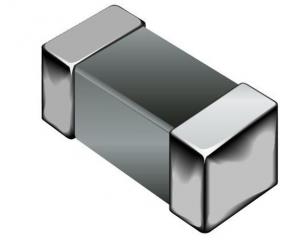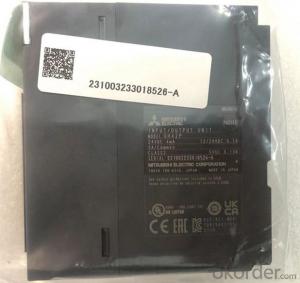SMD Multilayer Ferrite Chip Bead
- Loading Port:
- China Main Port
- Payment Terms:
- TT or LC
- Min Order Qty:
- 4000 Pieces pc
- Supply Capability:
- 4000 Pieces per Day pc/month
OKorder Service Pledge
OKorder Financial Service
You Might Also Like
low frequency Inductor/filter
1.SMD multilayer ferrite chip bead
2.Low Crosstalk/DCR Features
3.competitive price
4.by customer's requests
Features:
1.Low crosstalk/DCR, high reliability
2.Low crosstalk between adjacent circuits
3.Single MZA series chip provides noise attenuation for four lines, ideal for various highly miniaturized I/D lines
4.Internal electrodes feature low DC resistance, minimizing wasteful power consumption
5.Electroplated terminal electrodes accommodate flow and reflow soldering
6.Monolithic structure ensures high reliability
7.Operating temperature range: from -25 to 85 degree Celsius
Applications:
1.High-frequency noise counter measured in computer
2.Printers
3.Portable telephones and other equipments
4.VCRs
5.Televisions
- Q: A inductor L is in series with a resistor R50 ohms, and the series combination is across the 120 V rms, 60 Hz power line. If the rms voltage across the resistance R is 90 V, (I) what is the rms inductor current? (ii) Calculate the inductance L(i) VI (XL)---I90/50---I1.8 A(ii) (Vo)^2Vr^2+(VL-Vc)^2 is where I am confused. I asked my professor and he said use 2(pi)fL to helpI also calculated VL---120^290^2+VL^2. VL79.37 V rms
- You ve calculated the RMS voltage of the inductor. Now you need to find the impedance of the inductor. XL ωL 2πfL Now the voltage equation for the inductor XL * i(RMS) V(RMS) 2πfL * i V L V / (2πfi) L 79.37 / (2 * π * 60 * 1.8) L ≈ 0.117 H 117 mH
- Q: An inductor has an inductance of 0.075 H. The voltage across this inductor is 64 V and has a frequency of 660 Hz. What is the current in the inductor?
- Ohm's law still applies only this time you are working with inductive reactance instead of resistance. XL 2 pi f L V I XL I V / XL f 660 Hz; L 0.075 H; V 64 V Plug and chug!!
- Q: and whyalso does that work when you open circiut a capacitor.
- Remember that when a component is shorted, the situation is effectively the same thing as taking a wire from one terminal of the component to the other. That is, it's like having a wire in parallel with the component itself. Current flows through the short (or wire) instead of through the component. This is as true in AC circuits as it is in DC circuits. So if an inductor (or any other component) is shorted, then any component in parallel with it will also be shorted because it will also not have any current flowing through it. Components in series will not be shorted provided the short starts at one of the inductor's terminals and ends the other.
- Q: An RL circuit consists of two inductors of self-inductance L1 8.00 H and L2 1.00 H connected in parallel to each other, and connected in series to a resistor of 5.00 ? and a battery of 5.00 V . Assume that the inductors have no mutual inductance. When the battery is suddenly connected what is the initial rate of change of the current in inductor L1? What is the initial rate of change of the current in L2?What is the final, steady current in L1? What is the final, steady current in L2?
- In L1: Vs r i(t) + L1 di/dt di/dt Vs/L1 5/8 0.625 A/s In L2: di/dt Vs/L2 5 A/s Assuming R_inductors 0 steady current in L1: i1 (V/R)/2 0.5 A steady current in L2: i2 (V/R)/2 0.5 A
- Q: (a) If an inductor carrying a 1.60 A current stores an energy of 0.250 mJ, what is its inductance?(b) How much energy does the same inductor store if it carries a 2.9 A current?
- W0.5Li^2 whence 2W/i^2 L L 2 *.25 / 1.6^2.
- Q: A constant voltage of 12.00 V has been observed over a certain time interval across a 2.60 H inductor. The current through the inductor, measured as 3.00 A at the beginning of the time interval, was observed to increase at a constant rate to a value of 7.00 A at the end of the time interval. How long was this time interval?
- Given v12.00V, L2.60H, Δi4.00A The voltage across an inductor is given by: v L*di/dt v L*Δi/Δt Δt (L/v)Δi 0.87s
- Q: Hi,I just wanted to clarify something I am struggling to understand. I understand the concepts of AC and DC, but not capacitors and inductors.Why is it that Capacitors block DC current, but accept AC? Also, how do capacitors store energy from AC?Similarly, why do inductors short in DC, and how do they store energy?THANKS!
- A capacitor consists of two metal 'plates' separated by a thin gap; the gap is filled with an insulator (the 'dielectric') such as air or plastic. The gap means that a (direct) current can't flow across it. Strictly speaking, alternating current doesn't 'flow through' anything - the electrons are just repeatedly going backwards and forwards a fraction of a mm without actually getting anywhere. When you apply an alternating voltage to a capacitor, in half of the cycle the capacitor charges up: one plate loses electrons and becomes positive; the other plate gains electrons and becomes negative. In the other half of the cycle, this is reversed (it's slightly more complex than this, but you get the picture). The plates are being alternately made positive/negative, then negative/positive by supplying and removing electrons. We say the alternating current 'passes through' the capacitor, but what's really happening is that each plate is getting charged and discharged. Capacitors store energy in the electric field set up between the oppositely charged plates. The dielectric also stores energy because the charge distribution around the atoms is distorted by the electric field. An inductor is just a coil of wire wound on a core. It's an electromagnet and stores energy in the magnetic field produced. With DC it's no different to passing a current through a length of wire - the magnetic field irrelevant (except for a short time when the current is turned on or off). So it's a short circuit. With an alternating current, the magnetic field is repeatedly created and collapses; this gives rise to the inductor's impedance.
- Q: I want to find the total impendance of a coil. I think I know how to do it but I'm not sure.Z X + RX 2(pi)wLL (uAN^2)/lZ is impendance, R is resistance of the wire of the coil, X is the reactance, w is current frequency in hertz, L is inductance, u is permeability of the core, A is area of the coil loops, N is number of turns in coil, and l is the length of the coil.Together this would yieldZ (2(pi)wuAN^2)/l + RWould this be correct?
- All these formulas only apply to a sine wave single frequency. Z is from ohms law if you have measured V and I: Z + V/I Ideally Z is stated as a vector |Z|, which means a magnitude in ohms and a phase angle in degrees. If X and R are known: Z + sqrt(R^2 + X^2). This is using trigonometry to account for the resulting direction of the vector (phase angle) of the two components R and X. Some calculations involving power, voltage, impedance and current are easier using vectors and trigonometry, while others are easier using complex numbers (real and imaginary component). Complex numbers have a set of rules for arithmetic using them. Adding them as for two impedances in series is very straight forward. Z as a complex number is R + jX The following formulas allow for converting from one representation to the other. PF (Power factor) true power / apparent power cos(θ) from trig. θ arccos(PF) |Z| V / I with a phase angle (θ) Rseries |Z| cos(θ) Xseries |Z| sin(θ) Z R + jX |Z| sqrt(R^2 + X^2) where X is the net reactance of XL and Xc. θ arctan(Xs / Rs)
- Q: A series ac circuit contains a 170ohm resistor, a 15.0mH inductor, a 3.50 uF capacitor, and an ac power source of voltage amplitude 45.0V operating at an angular frequency of 360 rad/s.I found the power factor to be .211 and the avg power to be .265W. I can't seem to find the avg power to the resistor, capacitor, and inductor.
- Neither the inductor nor the capacitor will absorb power, so all the real power is delivered to the resistor.
- Q: At time t0, emf of 500V is applied to a coil which has industance of 0.7H and resistance of 40ohm. What is the energy stored in the magnetic field in the inductor when the current reaches one third of its maximum value?OMG im stuck on this, i don't know which formula to use.
- The maximum current is 500 V / 40.0 ? 12.5 A. Two-thirds of that is 8.33 A. The formula you need to use is (1/2)LI?. At the two-thirds point, the energy stored in the inductor is U (1/2) x (0.700 H) x (8.33 A)? 24.3 J
1. Manufacturer Overview
| Location | Guangdong,China (Mainland) |
| Year Established | 2010 |
| Annual Output Value | US$10 Million - US$50 Million |
| Main Markets | North America; South America; Eastern Europe; Southeast Asia; Africa; Oceania; Mid East; Eastern Asia; Western Europe |
| Company Certifications | ISO 9001:2000 |
2. Manufacturer Certificates
| a) Certification Name | |
| Range | |
| Reference | |
| Validity Period |
3. Manufacturer Capability
| a) Trade Capacity | |
| Nearest Port | |
| Export Percentage | 41% - 50% |
| No.of Employees in Trade Department | |
| Language Spoken: | |
| b) Factory Information | |
| Factory Size: | |
| No. of Production Lines | |
| Contract Manufacturing | OEM Service Offered Design Service Offered Buyer Label Offered |
| Product Price Range | |
Send your message to us
SMD Multilayer Ferrite Chip Bead
- Loading Port:
- China Main Port
- Payment Terms:
- TT or LC
- Min Order Qty:
- 4000 Pieces pc
- Supply Capability:
- 4000 Pieces per Day pc/month
OKorder Service Pledge
OKorder Financial Service
Similar products
Hot products
Hot Searches
Related keywords
